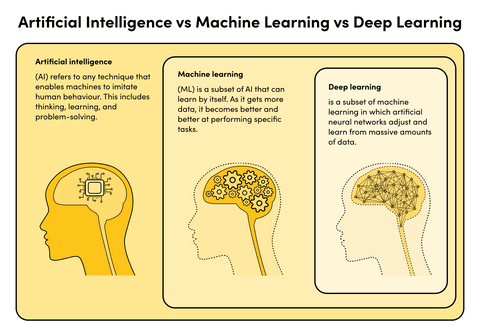


How is Artificial Intelligence (AI) changing software development?
As the world changes, emerging technologies are pushed through every day. Artificial intelligence in custom application development services is no longer a science fiction story. It’s a fact that has dominated the global market. Machines fly above our heads, understand verbal commands, drive cars by themselves, recommend us to binge-watch some TV series, and distinguish pictures. No human intervention, just AI tools.
How does it impact us? In short, they make our lives easier by freeing us of many mundane jobs or helping us with complex tasks. With this continuous artificial intelligence presence, we may say that we no longer have to wait for a better tomorrow – the future is here.
Most times, we don’t even pay attention to the fact that artificial intelligence is an inseparable part of our lives. And its impact gets stronger every day. Software development companies create more and more AI projects, including AI in software development and new AI tools in various industries.
AI enabled software development to go further – to optimize development projects, create assistive development software, and analyze big data in a short amount of time. All in all, it helps creating better software.


Have a project in mind?
Let’s meet - book a free consultation and we’ll get back to you within 24 hrs.
Using Artificial Intelligence for Software Development
Software development is about driving product innovation. The typical software development life cycle (SDLC) presents surprisingly complex components on a bigger scale project sizes. Businesses are racing for high-reliability software involving innovative development. AI can be used for the delivery of more customer-driven products.
How can AI transform traditional applications with AI tools into intelligent applications? Such assistive development software includes techniques such as NLP and machine learning using its sub-technology Deep Learning (DL).
AI used by software developers
Software developers adapted it into their engineering practice – they use the AI technology daily in coding and software development – natural language processing, software testing and bug detection, predictive analytics, etc. AI powered coding and turned it into something else. We also got the chance to develop such a software project, so we decided to share our experience.
This article will cover the definition of artificial intelligence, its advantages, and how AI technologies are used in our daily lives. Moreover, I’ll mention machine learning and how AI powered software development. Lastly, I’ll talk about our past projects and existing ones in which we used AI technologies. Ready?
What’s Artificial Intelligence?
AI refers to the simulation of human intelligence in machines. It includes learning, problem-solving, and perception. Now, there are two types of artificial intelligence, namely – weak AI and strong AI.
The first one, also called narrow AI, is focused on performing one specific task. A strong AI or artificial general intelligence, on the other hand, is the ability to comprehend, learn, solve or choose to solve any intellectual tasks that a human being can. But while weak AI already exists in our lives daily, the idea of strong AI is purely hypothetical with no real-life examples as of today.
A little clarification
Artificial intelligence, machine learning, deep learning – what’s the difference? You may be confused because often, these 3 terms are used almost interchangeably. Let’s dive into the relationship between artificial intelligence, machine learning, deep learning and see how they differ.
- Artificial intelligence refers to any technique that enables machines to imitate human behaviour. This includes thinking, learning, and problem-solving.
- Machine learning is a subset of AI that can learn by itself. As it gets more data, it becomes better and better at performing specific tasks with time.
- Deep learning is a subset of machine learning in which artificial neural networks adjust and learn from massive amounts of data.
What good comes with Artificial Intelligence
Artificial intelligence is often associated with risk and science fiction films, which couldn’t be further from the truth. In fact, in some industries, AI is up and running for a very long time (just like in the case of software development). Basing on that, it must have some benefits. So, what are they? Let’s take a closer look:
- AI algorithms can be used across industries, including development processes.
- AI operates all day without breaks or interruption, which means it can step in for us when carrying out some manual process, while we can focus on other matters, and the work will be done anyway. That being said, it also helps people with everyday chores at home.
- AI technology facilitates the strategic decision-making process and improves recommendation systems. It can be used in data analysis, project planning, etc.
- AI enables carrying out specific tasks and complex procedures without spending much time on it. This mitigates costs and makes the process more efficient.
- AI algorithms process data faster and more accurate than humans, translating into fewer errors and improving data integrity. It’s extremely beneficial in quality assurance, making software development easier.
If you want to learn more about quality assurance and software testing, check out How to take care of software quality – the process.
Artificial intelligence (AI) in software development – our experience
As I mentioned before, we also developed a few projects in which we embedded artificial intelligence algorithms. Now, it’s time to talk about how AI technology helped us introduce innovative solutions and create unique digital products.
We always make sure that we fully understand the core of the client’s business needs during the software development process by conducting extensive research. Thanks to this, we can adapt the project to the market’s needs and reduce the number of changes at the end of the development. Also, we’re actively looking for solutions that best fit the project and that will make it unique. Sometimes, one of such solutions is embedding AI algorithms or use AI powered tools.
Read more about computer vision, the subset of AI technology – its benefits, applications and relation to image processing.
The case of image manipulation – the software development process
But now, let’s talk about past development projects. The first one was about the ability to create a slow-motion effect. The only issue was that if the video doesn’t have enough frames per second, you can’t slow it down well enough to achieve a smooth transition. A solution? Artificial intelligence. Or rather machine learning algorithms – a deep neural network that’s able to generate extra frames with multi-frame video interpolation. Sounds easy?
It took a lot of work – first, we did the research, then adapted the implementation to our needs and finally, we trained the artificial network to perform the given task. But all the effort paid off in the end. Ultimately, the user can make the video 2, 4 or 8 times slower than the original version. The transition brought about by deep learning is much more natural and smooth compared to a common app effect. That’s the benefit of embedding artificial intelligence algorithms into the software project.
Dive into the project’s details during a call with one of our specialists.
Want to know more about our experience? Discover our previous, existing and new software projects here.
The case of real-time recommendations
The second project was about a dropshipping platform to guide customers through the website and provide them with new options based on their preferences. For this, during the software development process, we used 2 recommendation system algorithms. So again, we utilized machine learning to get the best results. What we did is that we observed user interactions with given products. Depending on the customers’ interactions with the product, we ranked the items. Based on consumers’ interests, choices, behaviour, we generated interaction matrices – all this to see how individual users click on given products.
The data was later used in training the AI algorithms to search for similar items in the store. This allowed us to create a system offering users products that fit their preferences. Moreover, thanks to this system, the most popular products were sold as they were also the most clickable items. There were more interactions than others, which, in turn, rated them higher by machine learning algorithms. As with any other recommendation system algorithms – the more users and products, the better additional purchases we’re able to generate.
Final thoughts on AI software development
I hope this blog post shed a little light on the subject of artificial intelligence and its impact on our lives. AI enabled software development to go beyond recognizable – natural language processing, quality assurance testing with no human intervention, code examples, and many more. But, of course, we only touched a surface of the AI concept, but surely many more articles will follow soon.
As you might have noticed, at Gorrion, we have experience in various industries and types of projects. Our team is a group of software specialists ready to go a long way to find the optimal solution for your software projects.
We know that every excellent cooperation starts with a meeting. That’s why if you want to talk about implementing artificial intelligence in your app, don’t hesitate and contact us. Book a meeting with Leo or send us a message. We’ll be happy to talk to you. Together, let’s turn your idea into reality.
Editor’s note: We’ve originally published this post in January 2021 and updated it for comprehensiveness.


Have a project in mind?
Let’s meet - book a free consultation and we’ll get back to you within 24 hrs.
Dominik is the Chief Innovation Officer at Gorrion and a full-stack software developer by both heart and trade. He is passionate about new technologies, teaching, and open-source. Sharing knowledge is what truly drives him, so you’ll often find him speaking at conferences and meet-ups. After work, he tends to work even more, but he also likes boxing, cycling, and bartending.



